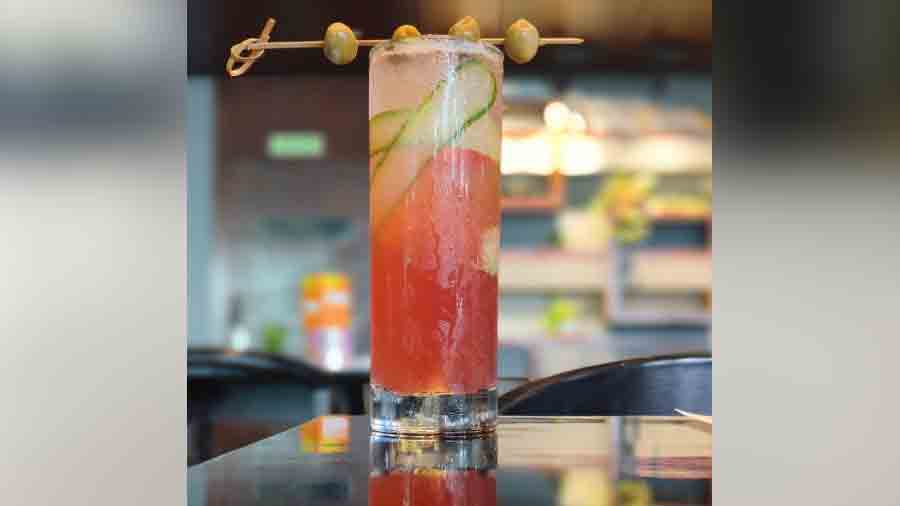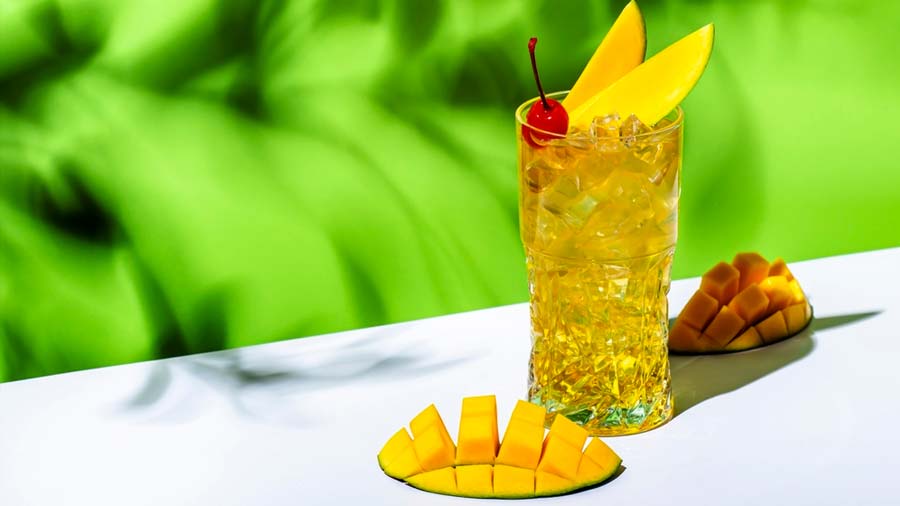In 2009, Birmingham resident Neil Houston, started a ‘Gin Day’ to celebrate the drink he and his friends loved. Neil’s friend, Emma, popularly known as ‘Gin Monkey’ (also the name of her online platform) moved it to a London bar the next year, and it has since grown and become a world event.
Celebrated on the second Saturday of June, this year, World Gin Day is on June 10. My Kolkata spoke to a few gin lovers from Kolkata's hospitality community to break down engaging ways of savouring the aromatic spirit that gets its name from the traditional European juniper liquor known as jenever, genièvre (French), and more such derivations.
A citrusy gin and tonic
From Shovon Paul, bartender at The Salt House:

“When at home, I love to create a Highball cocktail — gin and tonic with four ice cubes, a squeeze of lime, zest of an orange, and a dash of Peychaud’s Bitters, garnished with a sprig of thyme.The best part of sipping on this drink is you can have it at a leisurely pace, and enjoy the aromatic and botanical flavours,” said Shovon.
Sharing a lesser-known detail about gin, he said, “In the first British book of cocktails, the numero uno drink to be mentioned was a gin cocktail, made using ginger syrup, gin, Orange Curaçao, and bitters.”
A gondhoraj special
From Shubhobrata Majumder, Bar Manager at Olterra:

Shubhobrata Majumder with his G&T
“A simple gin & tonic with a squeeze of gondhoraj lime makes for a time-saving drink that also enhances the bitterness and botanical flavours of the gin. Usually, I add one wedge of gondhoraj to 60ml of gin, and garnish it with a gondhoraj leaf.”
Sharing an insight on how well the spirit is performing in India, Shubhobrata said, “Our country is currently the fifth largest consumer of gin in the world.”
A Roku Gin cocktail
From Sherlock Rozario, area director at Chili’s:

“With a spirit high on natural flavours such as gin, I like adding six cubes of ice to a shot of Roku — an amalgamation of six Japanese and eight traditional botanicals in one gin bottle — and then shake it with heaps of pomegranate pearls after which I pour it into a glass, and top generously with soda. For the garnish, I use cucumber strips in the drink, and some olives to munch on the side,” said Rozario.
Speaking about what attracts him most about this spirit, he said, “I like to see the benefit with what we consume these days and juniper berries, an almost inseparable part of gin, helps in blood circulation and fights liver and kidney diseases.”
A forgotten classic
From Harish C. Chhimwal, lead mixologist at Olive Bar & Kitchen:

“I have a lot of fun sipping on self-made gin-based cocktails at home. My favourite is a forgotten classic named Martinez, which is made with gin, vermouth, maraschino liqueur, and orange bitters, orange zest. The spirit, I feel, is highly versatile given the range of botanical prominence — berry, flower, tree bark, nuts, citrus, and tea. From time to time, I like infusing varying fruits, flowers, herbs and spices as well,” said Harish.
He added, “The gin and tonic was created in India during the British Raj, where the combination was added to the malaria-fighting quinine concoction to make it more palatable, and from this point onwards, it gained in popularity.”
Tom Collins with a summer twist
From Arindam Chakraborty, F&B executive at Fairfield By Marriott, Kolkata:

Representational image Shutterstock
“Gin takes the crown as the ultimate summer spirit with its light character, effortlessly blending with myriad juices, sodas, and practically any other ingredient you can imagine,” Arindam said.
“One way to enjoy gin is by giving a fruity twist to the classic Tom Collins, resulting in the tantalising Mango Collins. With the season of mangoes already in, you can use them from your kitchen stash to make a cocktail that combines gin with mandarin liqueur, luscious mango nectar, and freshly squeezed lemon juice, all topped off with the effervescence from club soda. He also revealed a contradiction to a popular belief, saying, “Gin is not an English invention. Its origins can be traced back to the Netherlands in the 17th century.”


